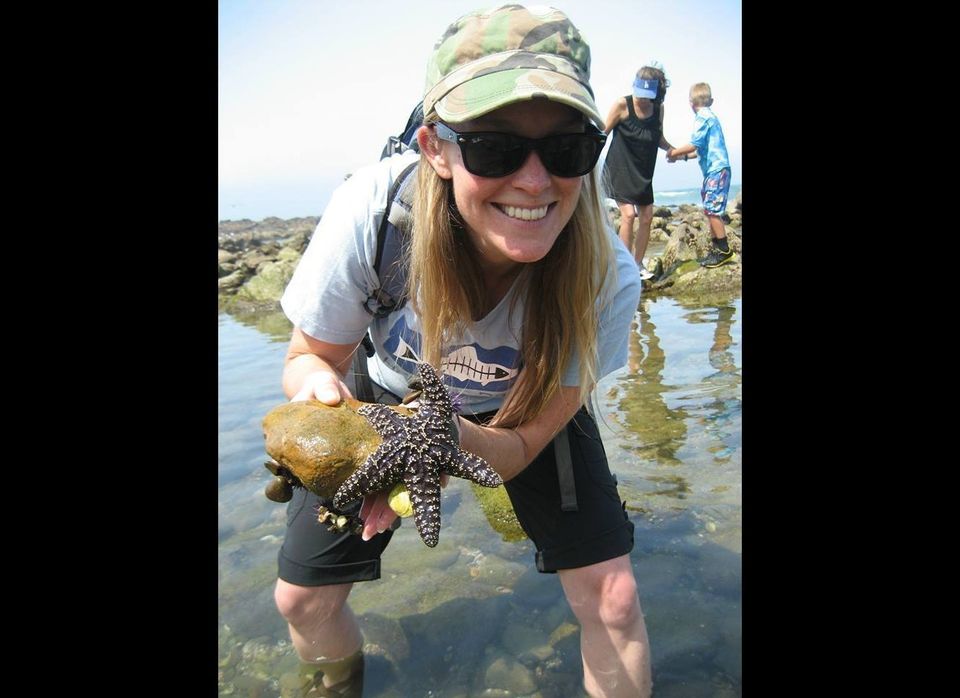Sylvia Earle unveiled a big vision this week at the third International Marine Protected Area Congress -- her announcement about 50 new Hope Spots is creating wonderful ripples around the globe. Many of us, as young girls, read about Sylvia Earle's aquatic adventures -- we dreamt of exploring the oceans just like the oceanographer affectionately known as Her Deepness. Sylvia's vision continues to inspire us all. In partnership with Mission Blue, Her Deepness aims to renew the health of our imperiled oceans by giving key spots relief from human stressors. It will take innovative thinking and strong collaboration, along with a global network of supporters, to realize this dream.
Like our myriad communities around the world, these Hope Spots are diverse -- they include transient and mysterious places like the Sargasso Sea, some of the deepest stretches of ocean along the Gakkel Ridge, the vibrant Coral Triangle, and remote and icy polar seas. They also manifest the unique challenges that face our global ocean communities, including how we maximize protection in a changing climate and how to address competing ocean uses.
While it is critical for us to focus on protecting ocean ecosystems with high diversities of marine life and unique sensitive species, we cannot underscore enough the many benefits that marine protected areas provide to people! Marine protected areas serve as underwater parks that provide places to educate, recreate, watch wildlife, and enhance tourism and local economies.
This is why efforts like California's Marine Life Protection Act Initiative, which strategically engaged communities in marine protected area design and planning, are so critically important. Another ardent fan of Sylvia Earle, my friend and colleague Sarah Sikich (the Science & Policy Director of Coastal Resources at Heal the Bay) did not imagine as a young girl that we'd actually have underwater parks in some of the most urban places in the world, like her home metropolis of Los Angeles. But as an adult, Sarah has spent several years at the table working together with local fishermen, educators, recreational enthusiasts, and other stakeholders in the golden state to design these underwater parks for the southern region -- just as I did for the north central coast of California a few years before that. A broad and diverse group of citizens & experts coming together to inform decisions about which special places off the coast of L.A. would be protected resulted in a system of marine protected areas designed to improve the health & viability of marine life roaming the waters, while providing ways for Angelenos (and everyone visiting L.A.) opportunities to connect with nature, like witnessing a gray whale from a bluff-top overlook, or being mesmerized by sunbeams dancing through the kelp forest while on a dive. Marine protected areas show us, in more ways than one, that the ocean is good for the soul.
Equally as important, marine protected areas along coasts with large urban centers provide opportunities for people to see conservation in action, helping to build a constituency for the ocean and enhancing stewardship. Some of these areas may not be the most pristine, but their potential to help revitalize ocean ecosystems is strong. And their ability to foster human connections with nature as urban underwater parks should not be underestimated. Just last month, Sarah trained a team of students to help with monitoring local marine protected areas for an MPA Watch program. Many of those students previously had no idea that we have underwater parks in Los Angeles. But now they do!
Stewardship building through education and community engagement will help inform more resilient marine protected area governance in the future, as today's youth will be tomorrow's leaders. And just as healthy marine ecosystems rely on diversity, so does a healthy ocean constituency. We've seen degraded areas of the sea be restored to thriving reefs, like Cabo Pulmo in Baja California, Mexico. I'm optimistic that shining a light on these "Hope Spots" while furthering protection of our urban coasts will catalyze creative ways to revitalize our ocean now and for future generations. And I'm proud that a legacy of fearless female leadership for our oceans, (which Sylvia started) continues to blossom through the dedicated work of Sarah and so many other young people who dare to make their dreams a reality for common good.
Advertisement
